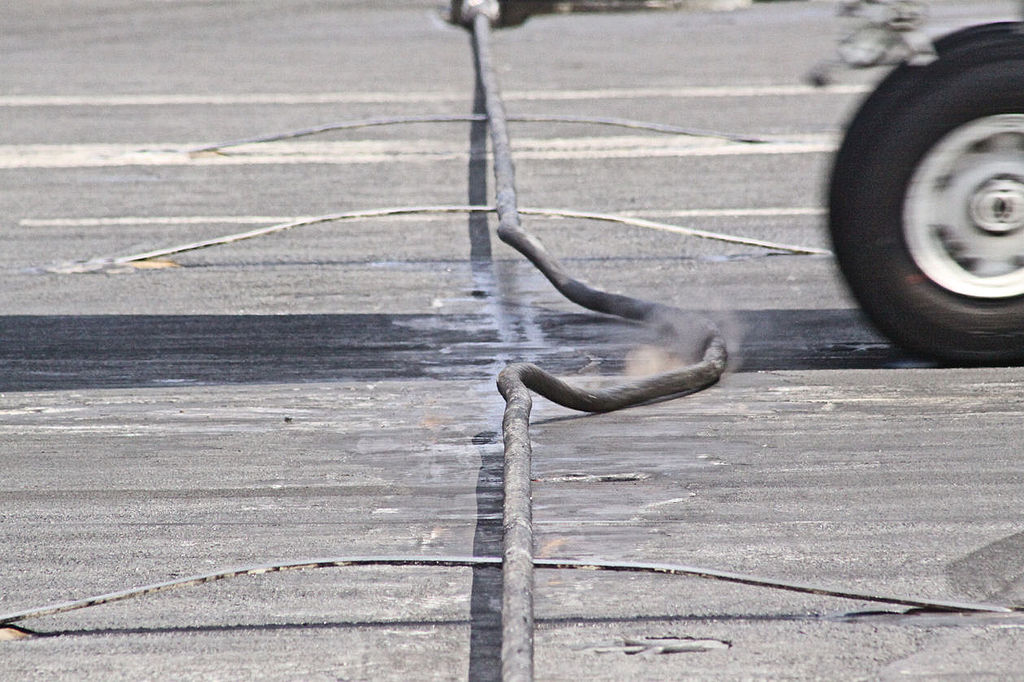The following article on the arresting system for naval aircraft is an excerpt from Barrett Tillman’s book On Wave and Wing: The 100 Year Quest to Perfect the Aircraft Carrier. It is available to order now at Amazon and Barnes & Noble.
In the century of conventional carriers, several methods of stopping an aircraft have been tried, evaluated, and ultimately rejected. One became universal.
After the Great War HMS Furious was fitted with fore-and-aft wires nine inches apart, elevated fifteen inches over the deck. Landing aircraft were kept straight within the longitudinal wires while hooks on the aircraft snagged the lines laterally. Argus used the same system. (For a while she lowered the forward elevator slightly, creating a “trap” for the landing aeroplane’s wheels. The system wrecked or damaged one plane in four.) Later in the 1920s Eagle received a more advanced version with pendants lowered to about nine inches. Ramps also were tested on Eagle.
While effective, the longitudinal arrangement had unavoidable faults. Pilots could not tell if their hooks had engaged, and a skewed arrestment threatened to snag a wingtip on parallel wires. The British abandoned the system around 1927, preferring to do without arresting gear. Then from about 1933 most RN carriers received transverse pendants—essentially the system used today.
The development of the modern arresting system
In April 1922 the U.S. Navy decreed for Langley, “The arresting gear will consist of two or more transverse wires stretched across the fore and aft wires . . . (leading) around sheaves placed outboard to hydraulic brakes. The plane, after engaging the transverse wire, is guided down the deck by the fore and aft wires and is brought to rest by the action of the transverse wire working with the hydraulic brake.”
Commissioned in 1927, Lexington and Saratoga employed electrically operated longitudinal and transverse arresting gear. However, the original design was modified in 1931 with hydraulically damped cross-deck pendants, a total of eight three years later. Subsequently both ships received another set of transverse wires forward in case flight-deck damage made it necessary to recover aircraft while backing down. Woven-wire barricades could be raised to protect parked aircraft during landing operations.
Japan’s pioneer flattop, Hosho, largely duplicated Langley’s original configuration with fore-and-aft wires supplemented by cross-deck pendants. But the process proved unnecessarily complex, and the longitudinal layout was abandoned.
Often overlooked in carrier development, France took an early lead when Béarn, commissioned in 1927, was built with a transverse arresting system. In fact, the French sold their system to Japan, and it was retroactively fitted on Hosho and Akagi circa 1931.
 |
This article on the arresting system of naval aircraft is an excerpt from Barrett Tillman’s book On Wave and Wing: The 100 Year Quest to Perfect the Aircraft Carrier. It is available to order now at Amazon and Barnes & Noble.
You can also buy the book by clicking on the buttons to the left.
Cite This Article
"History of the Arresting System For Naval Aircraft" History on the Net© 2000-2024, Salem Media.
April 25, 2024 <https://www.historyonthenet.com/history-of-the-arresting-system-for-naval-aircraft>
More Citation Information.






